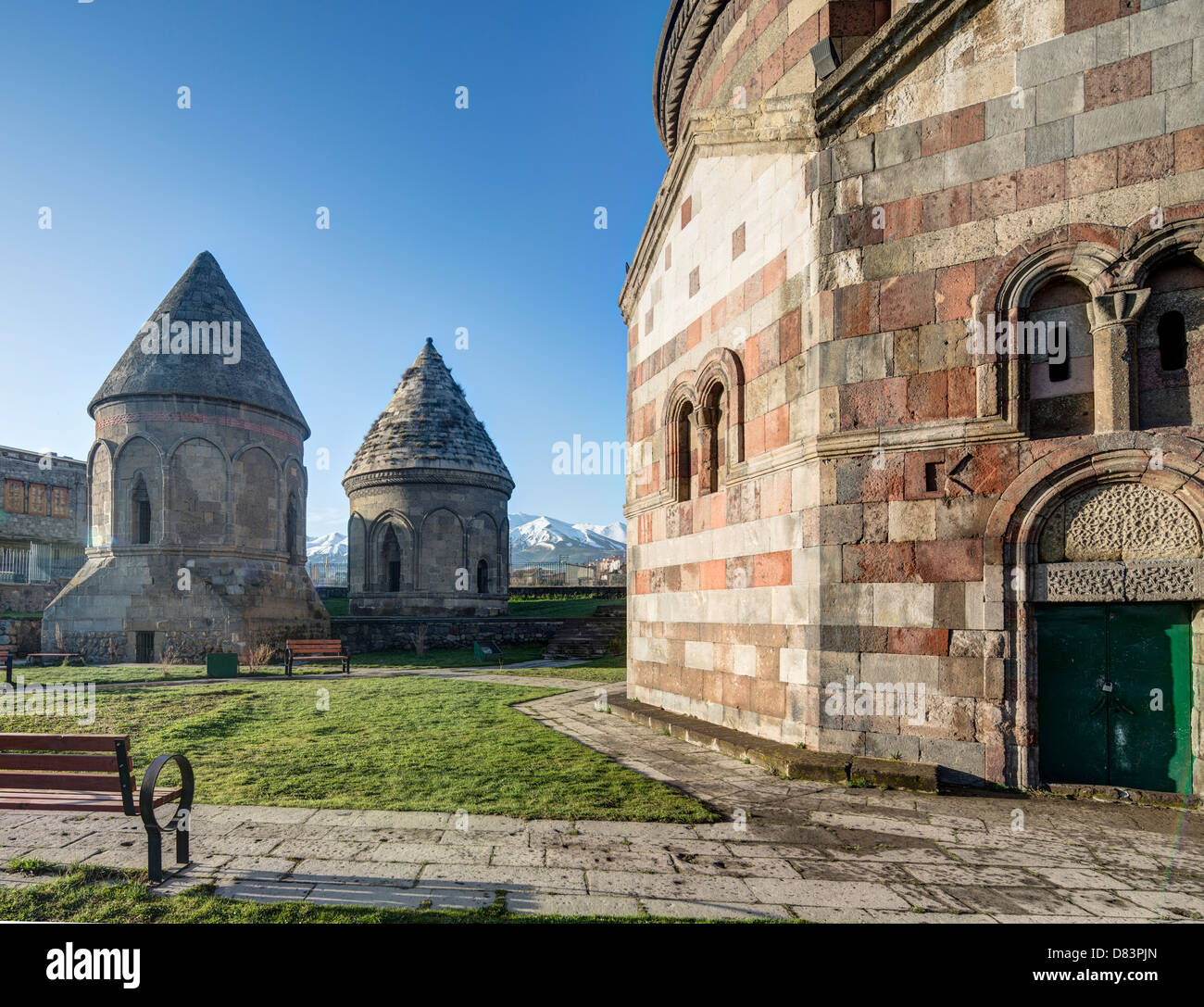Mausoleum of Emir Saltuk and two anonymous mausoleums, Erzerum, Anatolia, Turkey

Image details
Contributor:
B.O'Kane / Alamy Stock PhotoImage ID:
D83PJNFile size:
51.1 MB (3.3 MB Compressed download)Releases:
Model - no | Property - noDo I need a release?Dimensions:
4828 x 3703 px | 40.9 x 31.4 cm | 16.1 x 12.3 inches | 300dpiDate taken:
28 April 2013Location:
Erzerum, Anatolia, TurkeyMore information:
The Mausoleum of Emir Saltuk (1081-1102) is the largest and most unusual in a complex of three tombs just south of the walled city of Erzurum. The owners of the two other tombs are unknown, while that of Emir Saltuk is attributed to him only by local legend. Stylistically it has affinities to other twelfth century Saltukid architecture in Erzurum, particularly the domed masjid of the citadel. If it is indeed the tomb (kümbet) of the Emir, it would have been built in the late twelfth century. Some scholars attribute the mix of Seljuk, Armenian, and Georgian styles of the masonry to the fourteenth century. The fusion of these styles makes this mausoleum unlike any other in Anatolia. The base of the kümbet is octagonal, above which there is a short cylindrical section supporting a conical dome whose slope becomes shallower halfway up, giving the impression of an awkward dome. Each face of the octagon is decorated with two small blind windows crowned by arches. Above the windows each of the eight façades is topped with a pediment. The walls are built in alternating courses of light and dark stone until just above the windows; light stone dominates in the gable faces. A short roof connects the octagon of the base to the smaller drum below the roof. The drum has arched niches above each valley formed by the gables of the octagon's roof, inside which are carved animals of the Turkish Heraldic calendar, including a hare, an eagle, a bull, two snakes, and humans. A decorative cornice of cable molding tops the tomb. A round-arched doorway facing north leads into the tomb. Inside, the dome is a round structure with stairs lead down from the doorway into a small rectangular crypt.